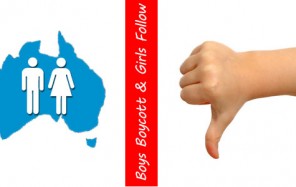Boys Boycott & Girls Follow

Competitive Edge operates a site: http://www.consumersentiments.com.au/.
The objective of this site is to raise the awareness of the “lost” customers because of a poor understanding of consumer sentiments, especially in relation to complaint handling and servicing consumers for products or services.
The return on investment of customers who switch brands, do not complain, but cease business or boycott an organisation and its product or service range/ brand is increasing in the e-Age.
As consumers gain the upper hand and develop a quick-fire method of complaining or searching for alternative products or services they can source globally via the Internet, they are demanding greater service and responsiveness
Brand switching from poor complaint resolution is already over 80%, and women are catching up to men in their conversion to boycotting despite having a more optimistic approach to complaints at the outset.
Although many customers were considered “captive” in the traditional marketing world, today they can be “released” to competitors very easily via the Internet and social pages that broadcast alternative offers, approaches, deals, and better service/ quality opportunities for future purchases.
The recent anti-GST campaign is a good example of the retailers mounting a campaign to try to rein in a small percentage of offshore purchasing because of perceived better value by consumers. Instead, it sent a clear message to consumers that they have an opportunity to look at and transact with global competitors. These major retailers, themselves major importers, appealed to the “fair go”, “level playing field”, and “keep it Aussie” values of Australians, only to be re-buffed by the consuming public.
Banks, now second to telecommunication companies in poor complaint handling, are heading down the same path, but differently. Previous consumers captive to credit cards, loan rates for houses, etc. can now go on the Internet and view the total offerings of financial and banking institutions daily. While the money may not go global, the brand switching and the continual cost of transactions as customers leave and arrive at the
e-Bank and traditional bank doorstep, is costing millions, if not billions in the long run.
Add to this the trend to boycotting which has been growing in the market place. Customer Champions, a U.K. based company, reports that “men who are unhappy with how a supplier deals with their complaint will boycott that organisation for an average of 10 years, double the time for women”.
This result is similar for Australia.
In our recent Consumer Sentiments Study in December 2010, we found that:
Seventy-seven percent (77%) of respondents said they would boycott products or services if they were not happy after complaining to a supplier.
Only 6% said they would not boycott the supplier of products or services, and 17% said they were undecided.
Forty-three percent (43%) of male consumers and 33% of female consumers would boycott between 5-10 years, with 34% of males bocotting 10 years or more.
Australian males, just as in the UK, have a higher propensity to boycott than women, but women are not far behind and are catching up.
Married people, and those in partnerships are most likely to boycott than single parents or unmarried people. The critical age groups for boycotting are 34-64 years. Retirees are the highest group likely to boycott, but their overall effectiveness on bottom line may be reduced.
Boycotting for a period of 10 years in the 34-64 age group means that they are removing themselves from your market place for almost one-third of their most viable working life and best years of potential return on investment to an organisation selling essential goods and services.
Boycotting like this has to have a major impact on the bottom line, and the cost of handling a complaint correctly through better customer service values, customer empathy, training and authority delegation, must be extremely small in relation to the lost return on investment combined with the cost of replacing that customer for a 10-year period.
Organisations need to wake up. This includes government whose currency is votes, community volunteering, support and civic compliance.
Our Consumer Sentiments Study results for December 2010 agree with Customer Champions in the U.K. when they state that when people complain “the focus is not on financial reward, it is much more focused on organisations ‘taking responsibility’ and ‘ownership of the issue’, and “treating the complaint seriously in an effort to get a satisfactory resolution”.
Boycotting has a long term and detrimental effect to a company’s bottom line and balance sheet. With social media impacts now being experienced, and the tendency of consumers not to complain via social media, but to use social media to broadcast their sentiments from the complaint outcome including boycotting and brand switching, there needs to be a change in the approach.
Our consumer organisations, including government, need new consumer-driven approaches to tackle complaint handling, resolution processes, and customer satisfaction in Australia, and apparently also in the U.K.
By: David Higginbottom
Competitive Edge
Date: January 18, 2011
Reference: http://www.consumersentiments.com.au/
